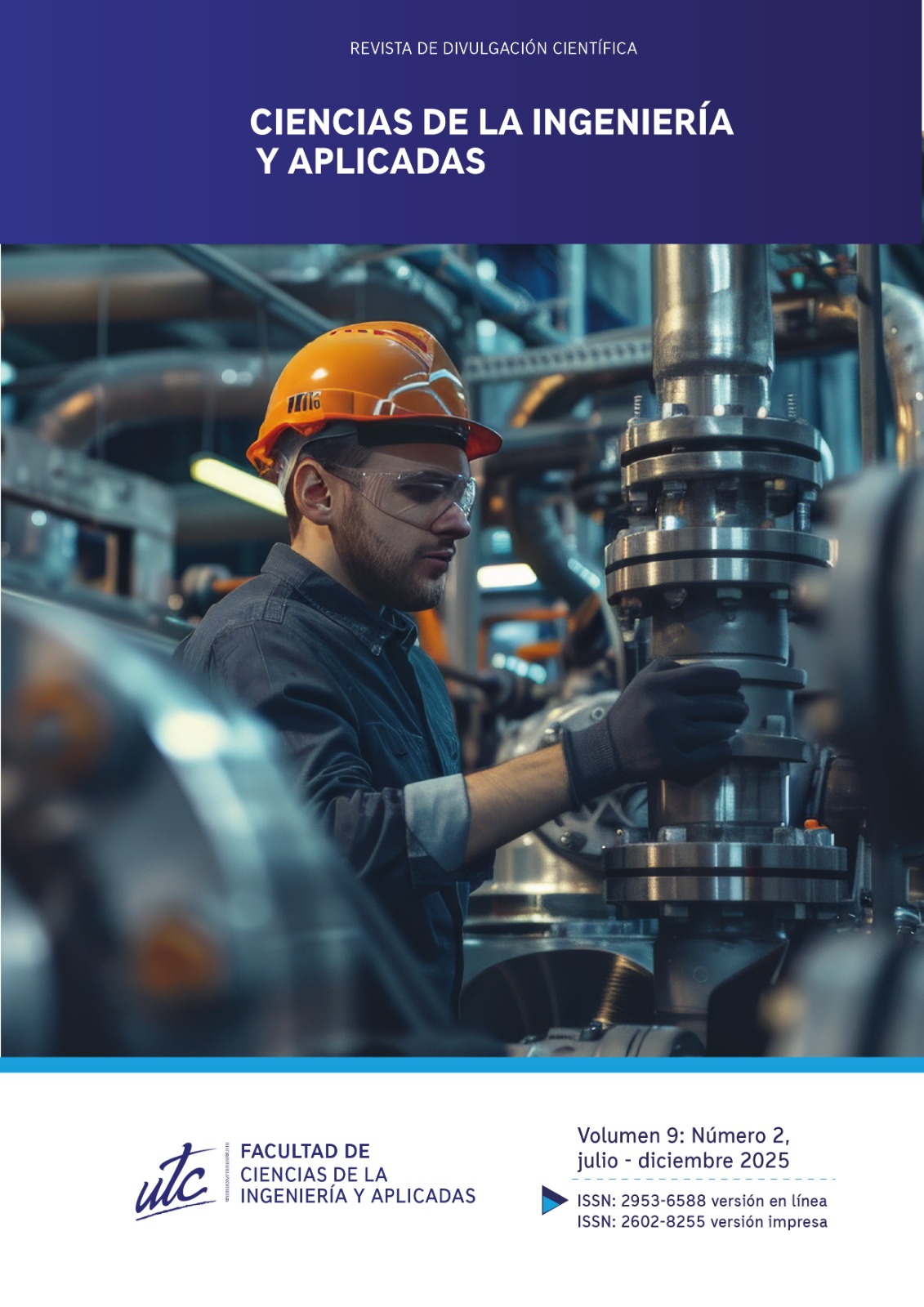Integration of Digital Technologies for Engineering Innovation
Abstract
Technological and digital evolution is revolutionizing modern education by facilitating new opportunities to enhance learning processes. Many of these advances have had a measurable impact on educational environments, as evidenced by the increasing use of digital platforms, technological tools, and virtual learning environments. These elements support the development of new methodologies that foster active learning. Recent studies indicate that over 80% of educational institutions have incorporated technology into their teaching processes, improving academic performance and promoting skills such as critical thinking and digital literacy. However, challenges remain in terms of equitable access, as 30% of students lack adequate connectivity or devices. Therefore, the need for public policies that promote digital equity is emphasized.
Downloads
References
Peralta FonsecaM. A., Egas GarcíaJ. P., Escudero AndinoF. F., y Muñoz VelascoP. G., «Carga mental de trabajo en docentes de educación superior técnica-tecnológica», CIYA, vol. 6, n.º 2, pp. 86-94, sep. 2022.
B. Garcia, «La educacion 4.0 para fomentar el apfrendisaje autogestionadoen los estudiantes de bachillerato de la unidad educativa Juan Antonio Vergara Alcivar,» revista INVECOM, 2023.
R. Campos Retana, «CamModelos de integración de la tecnología en la educación de personas que desempeñan funciones ejecutivas y de dirección: el tpack y el SAMR. Actualidades Investigativas En Educación».
P. S. T. Ana Moutinho1, «Aplicación de la metodología PRiSM™ para concienciar sobre la importancia de utilizar prácticas de gestión de proyectos sostenibles en las organizaciones,» 21 enero 2025. [En línea].
A. Boltsi, K. Kalovrektis, A. Xenakis, P. Chatzimisios y C. Chaikalis, «Herramientas digitales, tecnologías y metodologías de aprendizaje para la Educación 4.0: un estudio orientado a STEM,» 2024.
N. S. ,. H. y. A. Yacoub Siyam, «Evaluación de la integración de la tecnología en la educación: un marco para el desarrollo profesional,» discover education, 2025.
F. Camargo, «Camargo, F., Ahumada Méndez, A. ;, Stella, L., Fonseca Camargo, A.,Tecnologías 4.0: El desafío de la educación media en Colombia. Periodicidad: Semestral,» REVISTA INVECOM, p. 9, 2021.
B. Siabato, «Siabato, B., Isabel, A., Moreno, Á., Pablo Andrea Isabel Barrera Siabato, J., Nacional Abierta Distancia, U., & Juan PablUso de herramientas de la industria 4.0 en instituciones educativas rurales,» Periocidad:Semestral, p. 14, 2020.
A. Furnham, «Personalidad y proceso educativo: preferencias individuales en cuanto a docentes, tecnología, pruebas, tiempo y temas,» Aprendizaje y diferencias individuales, 2025.
W. Moreno-Crespo, «Moreno-Crespo, W., & Paredes-SalaLa gestión de las TIC y la calidad de la educación, medida por los resultados de las evaluaciones escolares estandarizadas.,» Moreno-Crespo, W., & Paredes-Salazar, N. T. (2015). La gestión de las TIC y la calidad de la educación, medida por los rLIBRE EMPRESA, p. 163, 2015.
R. Y. y. N. Haniye Mastour, «Exploración de la aceptación del aprendizaje electrónico en la formación de profesionales de la salud en Irán con base en el modelo de aceptación de tecnología (TAM),» 2025.
E. L. J. y. L. E. Fernández, «Competencias digitales en docentes de Educación Superior.,» Revista Digital de Investigación en Docencia Universitaria, p. 231, 2017.
F. Tao, «Tao, F., Zuo, Y., Xu, LIoT-Based intelligent perception and access of manufacturing resource toward cloud manufacturing.,» IEEE Transactions on Industrial Informatics,, p. 10, 2014.
F. D. P. W. J. Z. D. Chen, «Data mining for the internet of things: literature review and challenges.,» International Journal of Distributed Sensor Networks, , p. 103, 2014.
N. &. R. I. Akrout, «Broadband multimedia for distance education via satellite.,» Akrout, N., & Roxin, I. (1999). BroaIn Advanced research in computers and Communications in Education , p. 223, 1999.
G. (. Alkawi, «Mimarlık eğitiminde bim tabanlı disiplinlerarası işbirliği önerisi,» Mimar Sinan Güzel Sanatlar Üniversitesi, Fen Bilimler Enstitüsü., p. 15, 2016.
R. M. M. /. Y. H. ESCORZA, «TECNOLOGÍA EDUCATIVA EN EL SALÓN DE CLASE,» SciELO, 2010.
A. Tasayco-Jala, «Gestión del Conocimiento en Organizaciones 4.0. Horizontes.,» Revista de Investigación En Ciencias de La Educación, p. 27, 2023.
Fidalgo-Blanco, «Fidalgo-Blanco, Á., Sein-Echaluce, M.Education 4.0-based method to improve learning: lessons learned from COVID-19,» Fidalgo-Blanco, Á., Sein-Echaluce, M. L., & García-Peñalvo, F. J. (2022). education 4.0-based method to improve learning: lessoRevista Iberoamericana de Educacion a Distancia, p. 72, 2022.
Copyright (c) 2025 Ciencias de la Ingeniería y Aplicadas

This work is licensed under a Creative Commons Attribution-NonCommercial-NoDerivatives 4.0 International License.
The authors who publish in this journal agree to the following terms:
- Creative Commons Attribution-NonCommercial-NoDerivatives License allows others to share the work with acknowledgment of authorship of the work and initial publication in this journal.
- Authors may separately establish additional agreements for the non-exclusive distribution of the version of the work published in the journal (for example, placing it in an institutional repository or publishing it in a book), with an acknowledgment of its initial publication in this journal.
- Authors are permitted and encouraged to disseminate their work electronically (for example, in institutional repositories or on their own website) before and during the submission process, as it can lead to productive exchanges, as well as further citation. earliest and largest of published works (See The Effect of Open Access) (in English).











